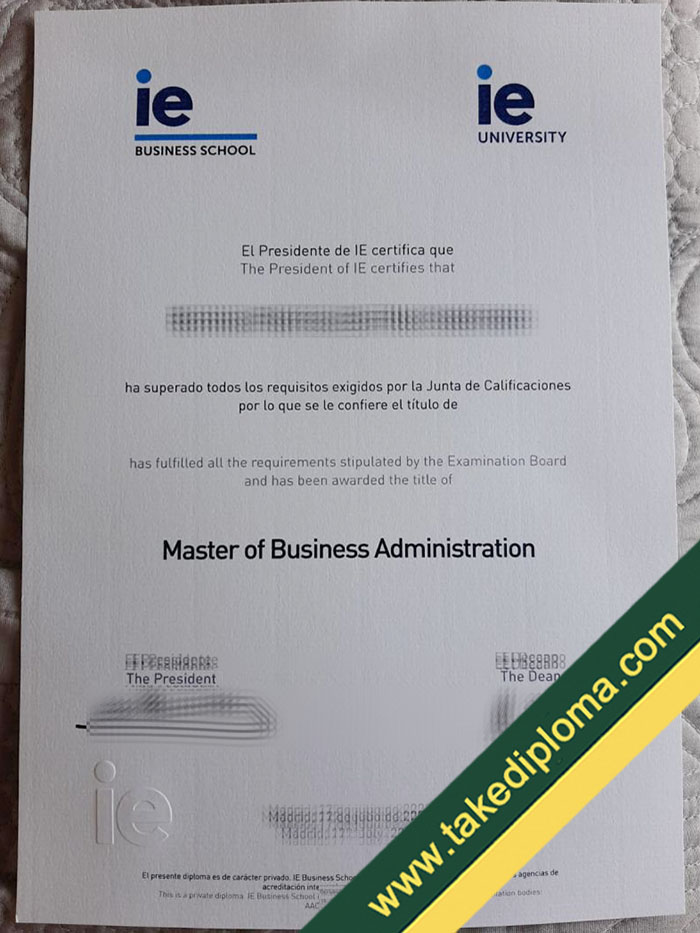How to Buy IE Business School Fake Diploma Degree?

Where to make IE Business School diploma, IE Business School fake degree for sale, IE Business School fake certificate sample, buy UK fake degree, buy USA fake diploma online, IE Business School is a graduate and undergraduate business school, located in Madrid, Spain. It was founded in 1973 under the name Instituto de Empresa (lit. Institute of Business) and is part of IE University since 2007. IE Business School is known for its master’s program in management, which has been well ranked by numerous publications. It maintains a global network of approximately 220 partner universities, while also offering dual-degree programs. The institution runs BBA, MBA, Executive MBA, master’s degree programs in finance and management, executive education programs, PhD, and DBA programs. IE Business School has multiple campuses globally and one of its main campuses is centrally situated in Madrid in Barrio de Salamanca, the luxury district. order IE Business School fake diploma, obtain IE Business School fake degree, purchase IE Business School fake certificate, buy IE Business School fake transcript, This campus currently occupies a total area of 28,000 square metres (2.8 ha), distributed among 17 buildings along the street Calle Maria de Molina, and is primarily used for postgraduate studies.
Additionally, IE Business School maintains a campus in Segovia, housed in the historic Convent of Santa Cruz la Real, an ancient monastery from the 12th century and characterized as a UNESCO World Heritage, which provides a traditional setting for undergraduate programs as well. The convent, founded in 1218 and closely linked to the Dominican Order, is characterized by its Romanesque and Gothic architecture. how much for IE Business School fake diploma, how long to get a IE Business School fake degree, buy IE Business School diploma, buy IE Business School degree, buy fake diploma, buy fake degree, Legends connect its origins to the penance of Saint Dominic of Guzmán in a nearby cave, while 15th‑century patronage by King Ferdinand and Queen Isabella led to extensive reconstruction under architect Juan Guas and sculptor Sebastián de Almonacid. This renovation produced a monumental church with an off-center portal rich in religious and political symbolism. After the dissolution of the Dominican community in 1836, the building was repurposed as a hospice and nursing home before being restored for educational use.
